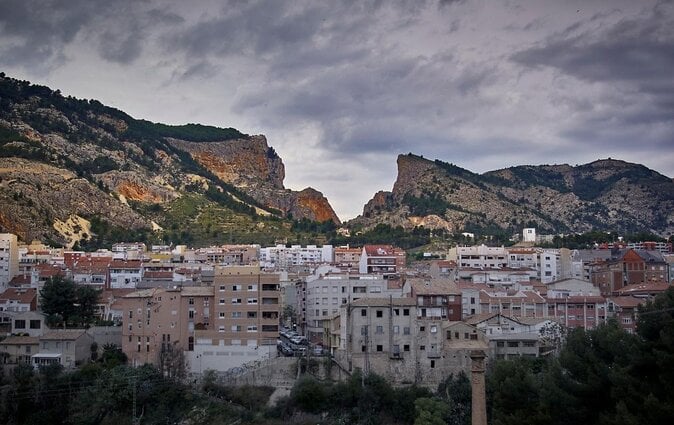
modernist-alcoy
During the late 19th to the early 20th century, the city of Alcoy was flourishing with its newfound wealth brought about by the Industrial Revolution. Like all wealthy cities in Europe, Alcoy embraced the new Art Nouveau or Modernist style of architecture.
In 2010 Alcoy was included in the European Route of Modernism; a European association formed by institutions and local governments whose purpose is the protection and international promotion of modernist heritage.
On September 22, 2017, during the 1st edition of the Modernist Fair of Alcoy, a commemorative plaque of that nomination was placed next to the entrance to the town hall, on the floor of the Plaza de España.
Casa de Pavo
The Casa del Pavo is without a doubt one of the most emblematic private buildings in Alcoy. It reflects the economic boom that the town underwent at the beginning of the 20th century.
The house was built between 1908 and 1909 by architect Vicente Pascual Pastor (1906-1908) with the help of Fernando Cabrera Cantó (1866-1937), one of Alcoy’s greatest 19th-century painters, who used the house as his studio.
The ironworks on its balconies and the ceramic tiles on its walls stand out from the façade. Equally noticeable are the door handle and a model of a turkey (after which the building takes its name) that sits above the door.
Antiguo Parque de Bomberos
Built in 1915 by the insurance company La Unión Alcoyana, the Antiguo Parque de Bomberos is a work of outstanding architecture that extraordinarily bears witness to the industrialization process of Alcoy.
This particular building complies with an Art Nouveau style and is the work of Vicente Pascual Pastor (1906-1908), a renowned architect from Alcoy. The construction stands out for its decorations carved in stone and its meticulous symmetrical composition.
Círculo Industrial
The Círculo Industrial institution was founded in 1868 by the industrial bourgeoisie of Alcoy.
Its façade —in Modernist, Viennese style —was designed by architect Timoteo Briet in 1904.
The bees symbolize the hard working industrialists while, the muses evoke the artists.
There are circles with pendants, wrought iron balconies and stuccos with drawings in Secession style.
There are differently decorated rooms in the building where you can admire the Secession, Art Déco and Art Nouveau styles. The Library and the Rotonda Lounge are particularly remarkable. An artificial grotto, built by V. Pascual in 1896, is found underneath the lounge.
These are just three of Alcoy’s Modernist buildings that are included in our Modernist Route Walking Tour. For more information, visit our Tours & Activities page.
